Authority for Statistics: Follow-up and field supervision on Hajj health services is one of the five key services offered to Hajj pilgrims. It includes over 33 basic services delivered by more than 6,000 supervisor and monitor
Authority for Statistics: Follow-up and field supervision on Hajj health services is one of the five key services offered to Hajj pilgrims. It includes over 33 basic services delivered by more than 6,000 supervisor and monitor
Government and service entities in Saudi Arabia offer a vast pool of services to Hajj pilgrims. These services are generally divided into 5 basic services: follow-up and field supervision of Hajj, general Hajj services, Hajj health services, Hajj transport services, and Information and Communication Technology services in Mecca and holy sites. GAS announced on Sunday, 3 Dhu al-Hijjah under the 1440 H Hajj season statistics records on its official website www.stats.gov.sa that the size of workforce providing follow up and field supervision services for the guests of Allah this year has reached 6,336 supervisors and monitors, including 156 females. These are supervising Hajj-related work carried out by all government and service entities from the arrival of pilgrims and until their departure.Follow up and field supervision of government entities in question is divided between desk work and field work. The total number of vehicles dedicated for field work reached 1,222 vehicles, including tailored equipment, cars, and motorcycles. They have been also equipped with 2,400 wireless devices for direct communication.
GAS indicated that 6 government entities are providing follow up and supervision services: The Emirate of Mecca Region, the Emirate of Medina Region, the Ministry of Hajj and Umrah, the Ministry of Commerce and Investment, the Control and Investigation Board, the Ministry of Labor and Social Development.The entities provide support and monitoring for Hajj and Umrah works in order to offer the best services for Hajj and Umrah pilgrims, supervise the performance of entities operating at outlets under the umbrella of the Ministry of Hajj and Umrah, identify shortcomings, supervise the transportation of pilgrims from their accommodation in Mecca to Mina (Tent City), supervise their return from Mina at the end of the pilgrimage to their accommodation in Mecca, oversee the transportation of pilgrims between holy sites in buses, prepare a plan for the boarding of pilgrims from pilgrim camps to Jamaraat Bridge, including boarding schedules and routes, oversee services provided to national pilgrims during their presence in holy sites to ensure high quality, address errors, and identify shortcomings, monitor the availability of supplied quantities of commodities, foodstuff, and meals in Mecca, Medina, holy sites, Jeddah, and Taif, monitor seasonal workforce during the Hajj season, check their workplaces and accommodation, perform overall monitoring of services offered during Hajj, and assist Committees charged with monitoring the distribution of holy site lands and camps.
It is worth mentioning that the main Hajj follow up and supervision services amount to over 33 services, from which many more services are derived. These services are carried out throughout the year, and not just during the Hajj season, through committees and teams emanating from the 6 government entities.
- End -
GaStat: Over 30,000 employees are ready to provide health services for pilgrims, with 16 hospitals in Mecca and the Holy Sites, 125 health centers, and 132 ambulance centers
1,141 medical and first response field teams provide their services 24/7
GaStat: Over 30,000 employees are ready to provide health services for pilgrims, with 16 hospitals in Mecca and the Holy Sites, 125 health centers, and 132 ambulance centers
The Kingdom of Saudi Arabia is investing all its human and material capacities in the service of pilgrims to the Holy Sites, as government entities come together to offer health services to pilgrims. The General Authority for Statistics (GAS) announced on Tuesday 5 Dhu'l-Hijjah 1440 Hijri that the workforce dedicated to providing health services and first aid to pilgrims this Hajj season has reached 30,908 people (of whom 8,685 are women). The numbers were published on the Authority’s website (www.stats.gov.sa( and include employees form the Ministry of Health, the Saudi Red Crescent Authority, and the Saudi Food & Drug Authority. They are joined in providing health services by teams from the security and military sectors. This brings the total of medical and first response field teams at the Holy Sites during the Hajj season up to 1,141 teams.
The GAS explained that health, treatment, and prevention services for pilgrims are offered by the Ministry of Health in the shape of free specialized medical services through a dedicated team of doctors, pharmacists, nurses, technicians, and administrative employees exceeding 27,797 individuals. Treatment services made available to pilgrims include: open heart surgeries, cardiac catheterization, dialysis - both hemodialysis and peritoneal -, endoscopies, birth procedures, and other specialized medical services. Currently, 16 hospitals are available inside Mecca and the Holy Sites, along with 125 health centers fully equipped for medical and emergency response, and 68 field teams operating at the Holy Sites and inside and outside Mecca.
The Saudi Red Crescent Authority has itself dedicated 132 permanent and temporary first response centers, 370 ambulances, 20 bikes, and 2,811 individuals for emergency and medical services in Mecca, Medina, and the Holy Sites.
All health and emergency response teams are operating 24/7 in Mecca and the Holy Sites until Wednesday 20 Dhu'l-Hijjah. The concerned authorities have already set the necessary comprehensive programs and plans to guarantee the provision of all capacities and requirements needed to deal with emergencies and disasters, if any, and to provide medical and emergency aid, treatment, and prevention services to Hajj and Umrah pilgrims and visitors. The plans have been rolled out effectively and efficiently based on a unified approach and using the most advanced medical and first aid provision methods. The services also seek to reinforce health security at the Holy Sites and the roads leading to them, and at land, air and maritime entry points. They are not limited to land services provided through ambulances but also cover Saudi Air Ambulance, motorbikes, fast response teams, and field teams at the Great Mosque and Al Masjid an Nabawi and their surroundings. These efforts rely on available human capacities and a group of male and female volunteers.
The Saudi Food & Drug Authority has assigned a team of 300 employees to monitor foods, medicine, and medical equipment and products imported by pilgrims and pilgrimage groups. This team is also in charge of supporting the concerned monitoring authorities in their inspection of establishments offering food to pilgrims in Mecca, Medina and the Holy Sites. The Authority’s seven key services include: inspecting foods, medicine, and medical equipment imported through entry points; health inspection of food establishments in the Mecca region; health inspection of food establishments in the Medina region; health inspection of animals sacrificed at Mina; field studies concerning food safety; raising awareness among pilgrims on the safety of food, medicine, and medical equipment and products; and inspecting transportation means entering Mecca and the Holy Sites.
- End -
GASTAT releases the results of the Agricultural Holdings Survey for 2018
The survey is based on the "holding" as the economic unit of both plant and animal agricultural production
GASTAT releases the results of the Agricultural Holdings Survey for 2018
On Dhu al-Qidah 29, 1440 (August 1, 2019), the General Authority for Statistics (GASTAT) issued its results on the "Agricultural Holdings Survey for 2018" on its official website, www.stats.gov.sa. The Agricultural Holdings Survey is one of the periodic surveys conducted by GASTAT every three years. It aims to provide an updated database from the agricultural census framework 2014-2015 on the main characteristics of the agricultural holdings such as the number of agricultural holdings, their area, the legal entity and the type of holdings. It also provides data on agricultural workers, in addition to a large number of data that support decision makers, policymakers, workers in the agricultural sector and those interested in this field. GASTAT carried out the "Agricultural Holdings" survey of 2018 in accordance with the recognized international practices in the statistical agencies. Since the "holding" is the economic unit of the agricultural production in both plant and animal, it is under one administration and includes all animals in it and all lands used in whole or in part for agricultural production purposes regardless of the ownership, legal form or area.
The results of the survey showed that the total number of agricultural holdings in Saudi Arabia’s administrative regions in 2017 was (283,788), with a total area of (34) million dunums. The percentage of traditional holdings is (88.4%) out of total number of agricultural holdings in Saudi Arabia with an area of (10.9) million dunums. Traditional holdings are the predominant type in most of the agricultural holdings in Saudi Arabia. This type of holdings does not have to take prior approval or licenses from the concerned parties and their activity may be plant, animal or mixed production. However, the specialized holdings (projects) reached (11.6%) of the total number of agricultural holdings in Saudi Arabia with a total area exceeded (23.3) million dunums, including the specialized holdings (projects) that were approved and have been granted licenses from the concerned parties after the technical and economic study to establish such specialized holdings, whether it was specialized in plant production, animal, poultry farms, fish farming, or those projects which mainly follow modern non-traditional methods in the irrigation system, or they use agricultural mechanization and modern technology in agricultural production and they are specialized in the production whether exposed or protected agriculture, raising cows to produce milk, or in fattening of calves, sheep and poultry .
The results of the survey also showed that (93.38% )of the agricultural holdings were owned by the holders and (6.58%) of the holdings were leased. The remaining holdings percentage (0.04%) was distributed among the other land holding systems. Regarding legal entity, "Individuals" ranked first with (98%) of holders.
In terms of the main purpose of production, (86.4%) of the landholdings production was allocated for "sale" and the rest of the holdings’ production was allocated for consumption, representing (13.6%). In terms of the main activity of agricultural holdings, the plant holdings reached the highest percentage (91.8% ) of the total number of agricultural landholdings, while animal holdings came second with (8%).
The results of the survey revealed that (20.1%) of the holders work in agriculture as the main occupation, and the remaining percentage (79.9%) are holders their main occupation is other than agriculture. The results also showed that the percentage of Saudis working in agriculture as a main occupation reached (99.5%) of the total number of holders who work in agriculture as their main occupation.
According to the detailed survey results on the main source used for irrigation water, the number of artesian and manual wells in agricultural landholdings reached (319,393). As for the agricultural holdings where the main source of irrigation depends on rain, it reached (96,627) holdings, with the area of holdings reaching (294,573) dunums out of the total irrigated areas.
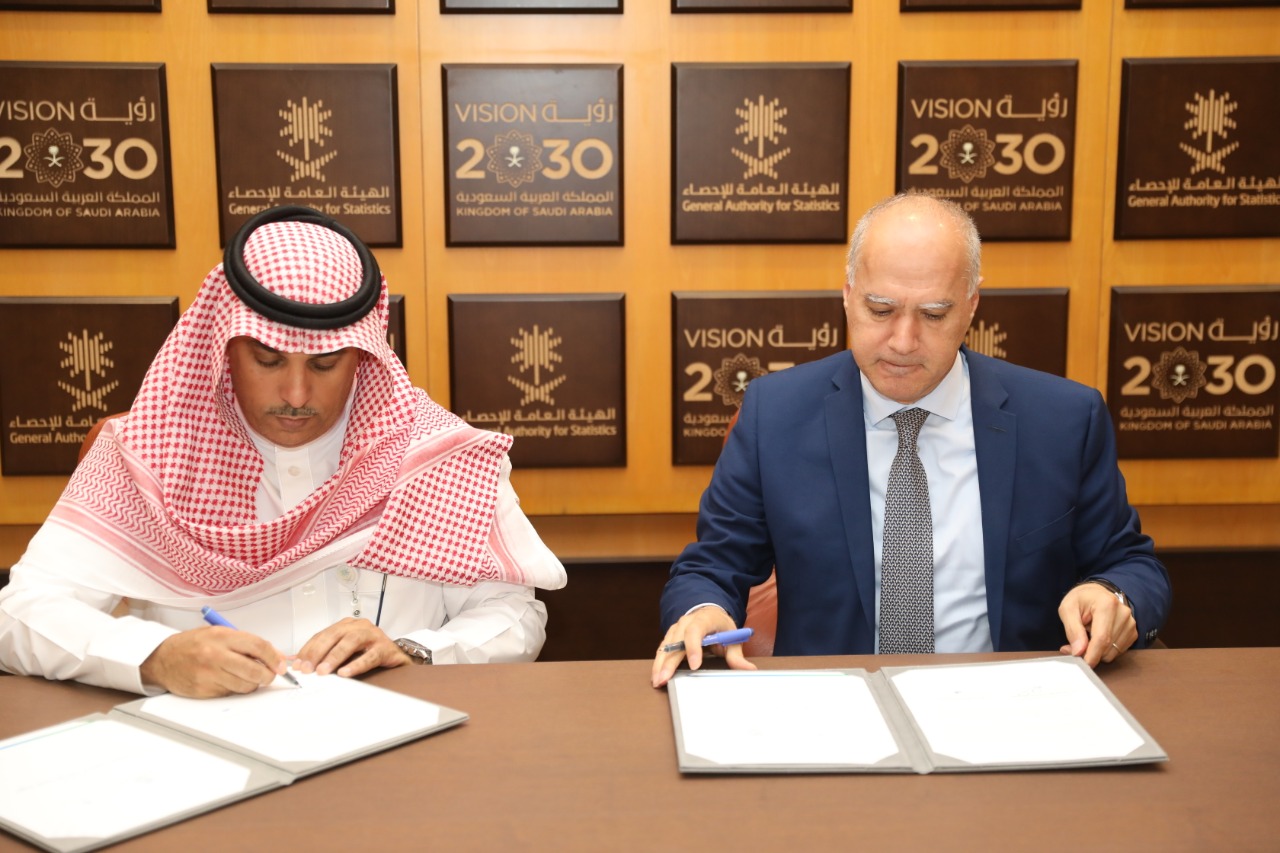
"الإحصاء" والبنك الدولي: شراكتنا تدعم الجهات الحكومية في تبادل البيانات الإحصائية وإبراز جهودها على المستوى الدولي
Signing a MoU to enhance Use of Data
“GASTAT” & World Bank: Our collaboration Supports Government Entities in the Exchange of Statistical Data and highlighting their efforts at the international level
The General Authority for Statistics (GASTAT) and the World Bank signed on Monday 5/11/1440 H (8/7/2019) a memorandum of understanding to regulate statistical data exchange and enhance the joint work to support government entities. The MoU regulates the provision of data and statistics on Saudi Arabia to the World Bank, the classification of statistical data, whether the survey data produced by GASTAT from economic and household surveys or data of administrative records collected by GASTAT from government entities. The agreement also includes the mechanisms for requesting data from sources, technical responsibilities, intellectual property rights and organization aspects of publication.
HE Dr. Fahad Bin Sulaiman Al-Tekhifi, President of GASTAT, affirmed that the organization of data exchange with international organizations is one of the strategic tracks of the work of GASTAT, which stems from Saudi Arabia’s position which is led by government entities under the guidance of the Custodian of the Two Holy Mosques and His Royal Highness the Crown Prince. Furthermore, it reflects the role of GASTAT in increasing the pace of coordination and collaboration with the international organizations concerning data and statistical indicators of Saudi Arabia. Moreover, it reflects the importance of the World Bank’s work in highlighting these indicators in international comparison programs and in carrying out studies and research relevant to the common development aspects of all countries of the world.
The Regional Director of the World Bank in the Gulf Region, Mr. Essam Abu Sulaiman, asserted that the collaboration with the General Authority for Statistics as the official statistical body of Saudi Arabia comes in order to highlight the efforts undertaken by Saudi Arabia in various fields of development, and in response to the increasing demand for statistical data, whether survey data or data from records released by government entities. He also added that the collaboration with the Saudi statistical body will play an active role in the data request operations and provision to the World Bank, and ensure their unification according to international classifications and standards. The Regional Director of the World Bank commended the procedures carried out by GASTAT which are in accordance with the international requirements and methodologies of statistical work applicable in all countries.
The World Bank is a strong partner in the GCC for more than 50 years. Government entities in the GCC have benefited from the World Bank's global development knowledge and expertise through its technical assistance programs. These include the activities in the GCC in key areas that the Bank has extensive international technical expertise in them, including improving service delivery, encouraging diversification of economic activity, strengthening governance, strengthening social protection systems and pensions. The World Bank is also working with the General Secretariat of the Gulf Cooperation Council to address interrelated issues, particularly in environmental protection.
GASTAT Releases Real Estate Price Index for Q2, 2019
GASTAT Releases Real Estate Price Index for Q2, 2019
General Authority for Statistics (GASTAT) released the report of Real Estate Price Index for Q2 of 2019. The report was published on the official website of GASTAT www.stats.gov.sa.
The real-estate price index recorded an increase by (4.0%), compared to the previous quarter (Q1, 2019), where its indicator reached (80.4) in Q2, 2019, compared to (80.1) in Q1, 2019. This increase can be attributed to the changes in the main sectors composing the indicator, where housing sector in addition to commercial sector showed an increase by (2.0%) and (8.0%), respectively, whereas agricultural sector edged down to (1.0%), compared to Q1 of 2019.
In detail, residential sector witnessed an increase in residential lands as well as apartments, reaching (0.2%) and (0.5%), respectively in Q2, 2019 compared to the previous quarter. However, a decrease was recorded in three groups: residential buildings (0.3%), villas (2.7%), and houses (0.3%). Regarding commercial sector, commercial land plots and commercial centers rose by (0.8%) and (2.1%), respectively, while exhibitions (shops) dropped to (1.9%). At the level of agricultural sector, agricultural lands fell to (0.1%).
It is worth noting that the index is based on register-based data of real-estate transactions available at the Ministry of Justice. It is an essential tool that supports entities making economic and statistical decisions regarding the movements of real - estate prices and future forecasts during different periods of time. The index has three main sectors consisting of several types of real estate classes: housing sector which includes (plot of land, building, villa, apartment, and house), commercial sector including (plot of land, building, exhibition/commercial center and shop), in addition to agricultural sector with one category which is the agricultural land.
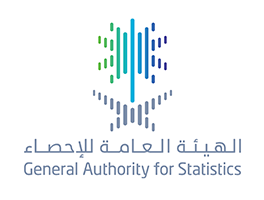
الهيئة العامة للإحصاء: تصدر التقرير الشهري للرقم القياسي لأسعار المستهلك لشهر يونيو 2019م
GASTAT: releases Consumer Price Index(CPI) Monthly Report for June,2019
General Authority for Statistics (GASTAT) released its monthly report of CPI in Saudi Arabia for June, 2019. The report was published on its official website www.stats.gov.sa. CPI index increased by (%0.2) compared to last month (May,2019).
GASTAT’s report indicated that the consumer price index CPI in Saudi Arabia increased from (105.7) in May,2019 to (105.9) in June,2019 with (%0.2) change.
As a matter of fact, the report attributed this increase to the increase of the five sections composing it, which are: personal goods and services section with (%1.8), culture and entertainment section with (%1.5), transportation section with (%0.6), restaurants and hotels section with (%0.6), and food and beverages section with (%0.2).
In contrast, three of the main sections witnessed a decline, which are: housing, water, electricity, and gas section with (%0.4), clothing and shoes section with (%0.2), finally home furnishing and equipment section with (%0.1).
On the other hand, health, telecommunication, education, and tobacco sections remained stable with no change.
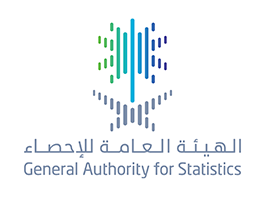
الهيئة العامة للإحصاء تصدر نتائج مسح الثقافة والترفيه الأسري لعام 2018م
Statistical Survey Issued by GASTAT for the First Time
GASTAT Releases Results of Household’ Culture and Entertainment Survey for 2018
General Authority for Statistics (GASTAT) released results of “Household’ Culture and Entertainment Survey 2018”. The survey was published on its official website www.stats.gov.sa. This survey complements the new statistical products implemented by the Authority to meet the local and international requirements of statistical data. It is first-of- its- kind survey in the field of household culture and entertainment, which will be conducted on a periodical basis every three years by GASTAT in line with the international methodology of culture statistics. The fundamental objective of the survey is to support decision makers, policy makers, researchers, and those who are interested in up-to-date data on statistics of household culture and entertainment in Saudi Arabia by (gender, nationality, educational status, age, and marital status).
(35.36%) of Saudi Arabia’s population (Saudis and non-Saudis) had a home library during the 12 months. In detail, the percentage of reading books among Saudi individuals (15 +) was (58.18%) during the 12 months. The percentage of both (Saudi and non-Saudi) individuals (15+) who read newspapers or magazines recorded (53.96%), out of total population of Saudi Arabia. For Saudis, the total percentage of Saudi individuals (15+) who read newspapers or magazines accounted for (59.46%) during the 12 months, where (67.14%) of them were Saudi males, and (51.48%) of them were Saudi females. However, the percentage of reading electronic newspapers or magazines was (66.58%), out of the total number of reading newspapers or magazines, while the percentage of reading printed newspapers or magazines reached (5.77%). As for both types, the total percentage of reading electronic or printed newspapers or magazines registered (27.65%), during 12 months, according to the results of the survey.
(42,40%) of Saudi individuals (15+) visited theme parks for entertainment or culture as the most visited places in the residence of place during 12 months. However, cultural landscapes are the most visited places for Saudi individuals (15+), recording a percentage of (57.21%), out of total Saudis who traveled inside Saudi Arabia to visit cultural or entertainment places during the 12 months. Likewise, cultural landscapes were one of the most visited places for Saudi individuals (15 +), where the total number of Saudis who traveled outside Saudi Arabia to visit cultural or entertainment places during the 12 months was (70.03%), based on the survey’s results.
Watching television or listening to radio stations recorded the highest percentage as the most cultural and entertainment activities practiced by Saudi individuals during their free time at the level of Saudi Arabia, reaching (67.02%), out of the total number of Saudis who engaged in cultural or entertainment activities during the (12) months.
GASTAT is pleased to provide its clients of data users with the detailed results of the survey. The results will be available on its website, containing about 40 statistical indicators.
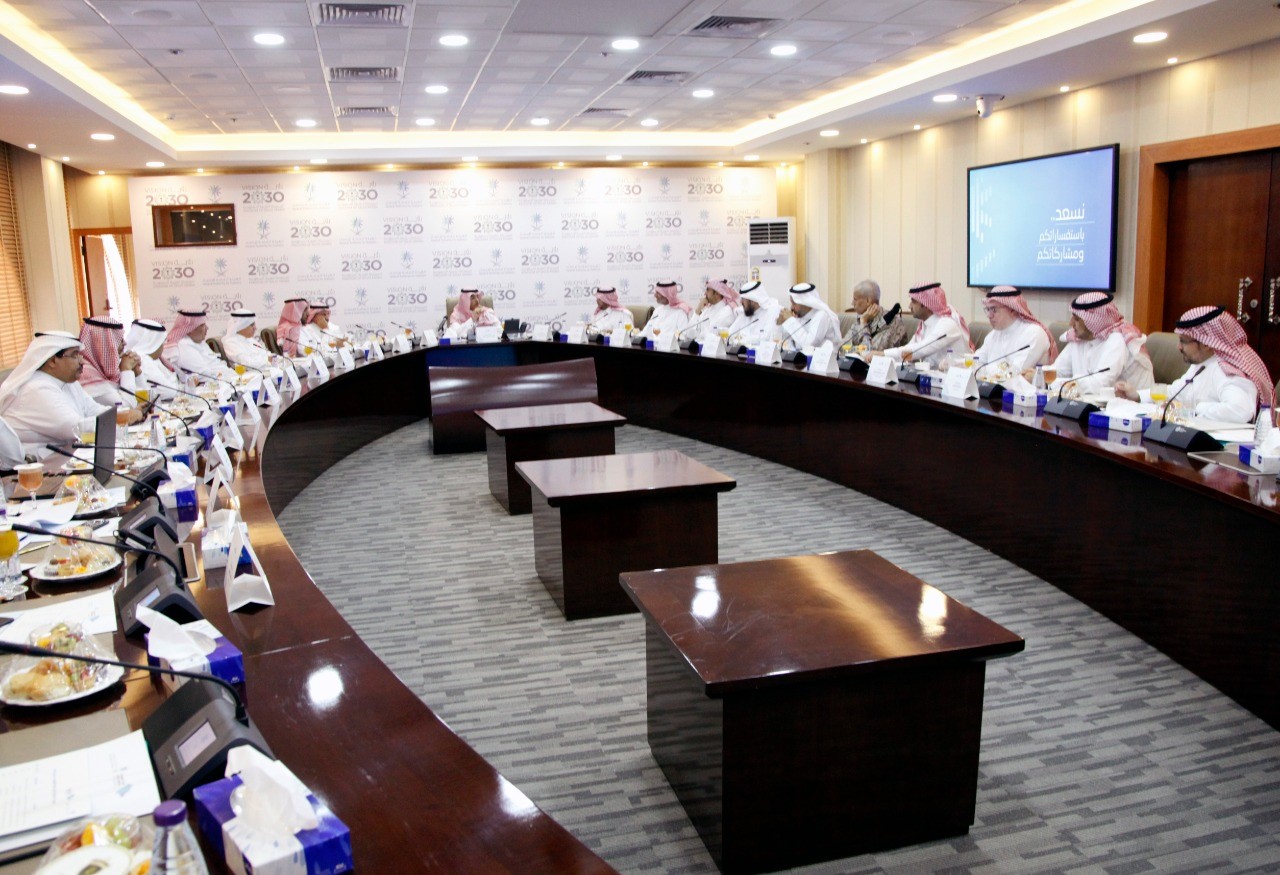
8 جهات حكومية تراجع 21 خطة تنفيذية لتعداد السعودية 2020
256 days until the beginning of Saudi Arabia Census 2020
8 governmental entities review 21 executive plans for Saudi Arabia Census 2020
The president of the General Authority for Statistics, Dr. Fahad bin Sulaiman Altekhaifi confirmed that all preparation for the General Population, Housing, and Establishments Census 2020 are complete with the participation of a number of related governmental entities. 21 executive plans within the project’s preparatory stage have been prepared, including all tasks and requirements to the census implementation. These plans also cover all stages of work in details. the executive committee of Saudi Arabia Census 2020 has held its first meeting on Wednesday Shawwal 30th 1440H at GASTAT head office, with the participation of Ministry of Interior, Ministry of Defense, Ministry of Health, Ministry of Commerce and Investment, Ministry of Education, National Information Center, and Saudi Post. All issues of electronic linkage with the National Information Center, the plan of classifications and manuals, manpower and training, maps and postal address have been discussed, in addition to a number of topics related to information technology and field works.
Altekhaifi said that the collaboration adopted by all governmental entities will enable them all from investing all means of modern technologies which provides a wide database that can be used as a reliable reference when conducting the studies and research required for Saudi Arabia developmental plans and programs, in addition to providing statistical data and indicators that measure the changes of population characteristics over time, making national and international comparisons, revising and evaluating the future population estimates, and providing detailed data that was not available before because of the nature of technologies and software that were used in the previous census ten years ago. GASTAT works with its partners to develop and build a unified geo-spatial database that covers all Saudi Arabia cities and villages, which makes a complete transformation while dealing with the geographical data of the digital image at all stages of the census, and enables data exchange with GASTAT clients in different sectors. His excellency expressed his appreciation for the great support that GASTAT and other governmental entities receive from our great leadership for the success of census works.
It is worth mentioning that there are 256 days to go until the beginning of the census. The approval of His Royal Highness, the King of Saudi Arabia has been announced previously to specify the evening of Tuesday 22nd of Rajab, 1441 H corresponding 17th of March, 2020 to be the beginning of the actual enumeration works of the Fifth Population, Housing, and Establishments Census in Saudi Arabia. This date shall be approved as the time reference date for all census works, data, and information. A new portal has been launched specifically for all details of census works: https://saudicensus.sa/
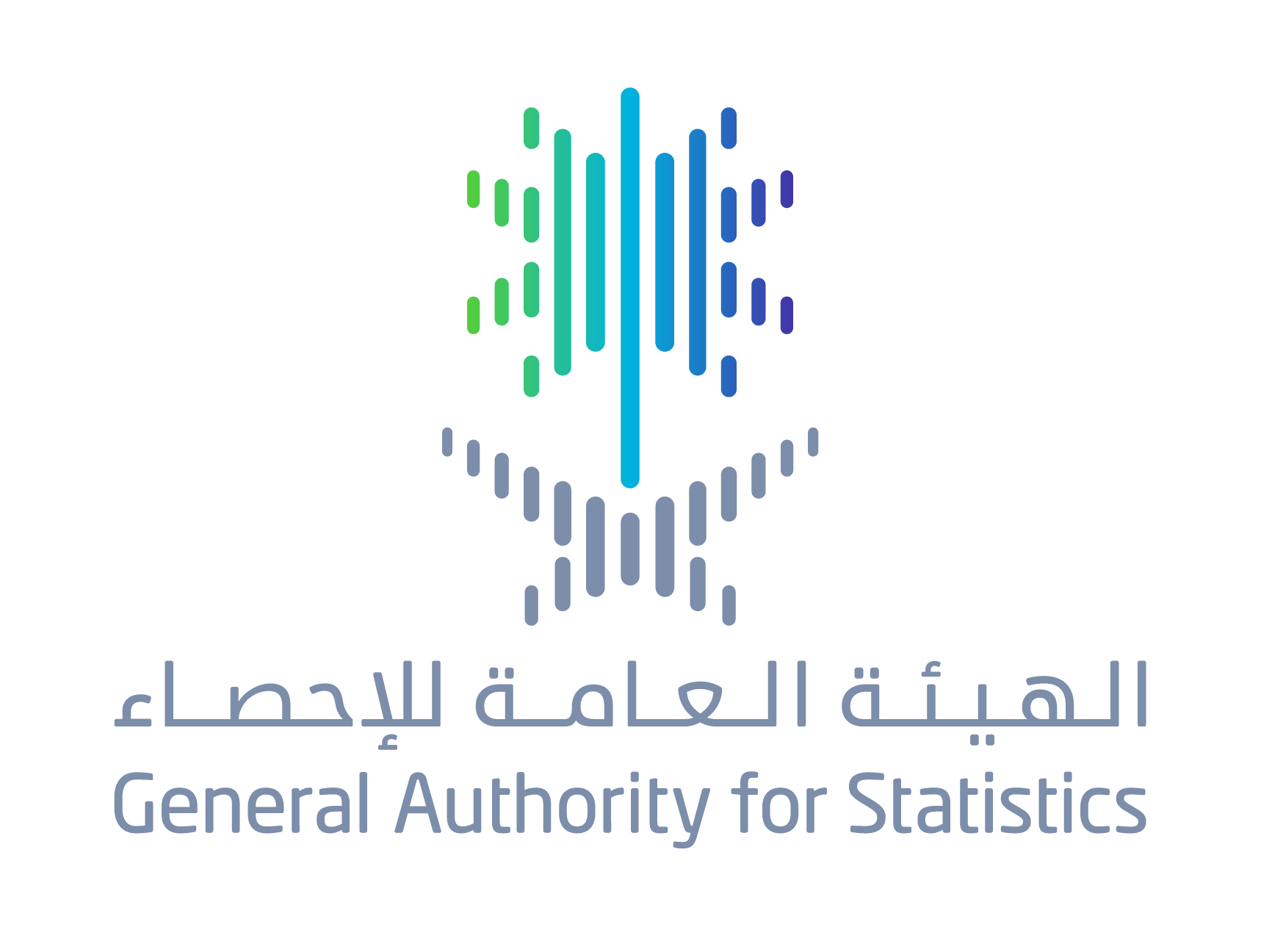
الهيئة العامة للإحصاء تصدر تقرير نتائج مسح صحة الأسرة 2018م
GASTAT Releases Results of Household Health Survey, 2018
GASTAT released the results of Household Health Survey, 2018 on its official website. The importance of this survey lies in the data and indicators provided for health. It includes indicators for health status of individuals, population suffering from chronic diseases, periodic health check-ups performed by individuals, in addition to indicators of family planning procedures, fertility rates, and child mortality.
Results showed that the percentage of (Saudi and non-Saudi) population (15+) who have good to very good health has increased, and that is based on their own assessments where the percentage hit (95%) compared to (%94.2) in 2017. In regard to Saudis, the percentage of Saudi males who have good to very good health reached to (%94.2) based on their own assessments, while the percentage of Saudi females who have good to very good health was at (%92.3) based on their own assessments.
Results also showed that (%24.3) of total population (15+) perform periodic check-ups to check their health at least once a year. Additionally, percentage of (Saudi and non-Saudi) population who are covered with health insurance reached (%38.6).
On the other hand, results of the survey indicated that the percentage of population who are suffering from chronic diseases in the age group (15+) has decreased to (%15.9) compared to (%16.4) in 2017.
Based on the survey’s results, total fertility rate of women between (15-49 years) was (1.92) birth per woman. As for Saudi females, the total fertility rate was (2.33) births per woman. The results indicated that (%32.9) of married women between (15-49 years) are using modern contraceptive methods.
Moreover, mortality rate among children under five years was (8.5) deaths per 1,000 live births, while mortality rate among infants under one year in Saudi Arabia was (6) deaths per 1,000 live births.
Results revealed that percentage of population (15+) who were diagnosed with diabetes reached (%8.5). The percentage of population (15+) who were diagnosed with heart diseases was at (%1.21). On the other hand, the percentage of population (15+) who were diagnosed with hypertension was (%7.6).
Household Health Survey also includes other indicators such as: distance between households and health centers, percentage of children under two years who are committed to vaccination, average number of hospital admissions per 1000 individuals, in addition to other indicators.
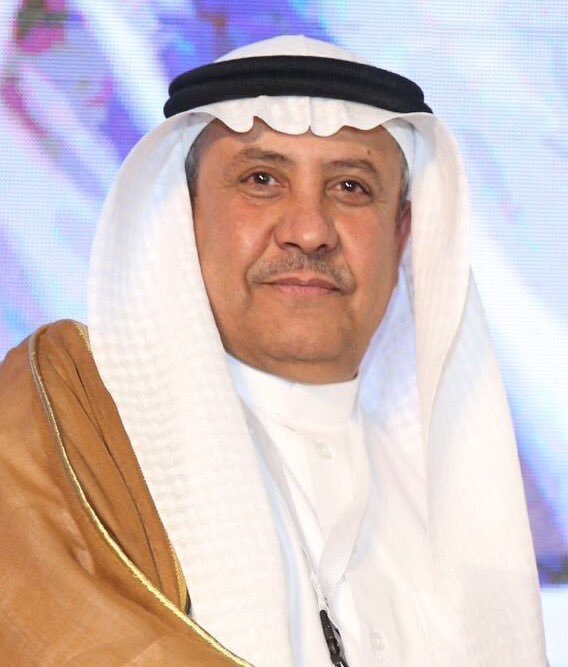
مساهمة ( 16.8% ) من السعوديين في الأعمال التطوعية ، ومتوسط ساعات العمل التطوعي لإجمالي السكان بلغ (52.2) ساعة خلال الاثني عشر شهراً السابقة للمسح
Within GASTAT surveys that are implemented for the first time
(16.8%) of Saudis contribute in voluntary works, and the average voluntary working hours of total population reached (52.2) hours during the twelve months preceding the survey
On Friday Shawwal 18th 1440 H corresponding June 21st 2019, the General Authority for Statistics (GASTAT) released the results of “ Voluntary Works Survey 2018” on its official website www.stats.gov.sa . this survey is implemented kingdom-wide for the first time within the requirements of Saudi Vision 2030.
GASTAT vice president Mr. Abdullah Albatil said that this survey aims to identify the percentage of individuals’ contribution in voluntary works, provide up-to-date statistics on the percentage of volunteers out of total Saudi and non-Saudi population (males and females), and the average working hours of those volunteers. In addition, it identifies the nature of voluntary works performed by society members and the fields of practice. The survey also gives detailed data on voluntary works by occupations and economic activities. Hence, it supports decision and policy makers, researchers, and those who are interested in getting up-to-date and comprehensive statistics that are related to voluntary work in Saudi Arabia. The survey would enable both the public and the private sectors to study the variables of voluntary work to use them in preparing the future developmental, social, and economic programs in Saudi Arabia, increasing the efficiency of voluntary work, and providing the academic sectors with the requirements of social and economic studies and research. The vice president expressed his appreciation to all the concerned entities including the Ministry of Economy and Planning, the Ministry of Labour and Social Development, in addition to a number of voluntary institutions and associations for their participation in the survey questionnaire.
The results of Voluntary Work Survey 2018 showed that the percentage of total volunteers (Saudis and non-Saudis) out of total population (15 years and above) during the twelve months preceding the survey reached (14.7%). However, the percentage of Saudi volunteers (15 years and above, males and females) during the twelve months preceding the survey reached (16.8%), where Saudi males registered (22.6%) and Saudi females registered (10.8%).
According the survey results, the average working hours of total volunteers (Saudis and non-Saudis) reached (11.2) hours during the four weeks preceding the survey, whereas the average working hours of total volunteers (Saudis and non-Saudis) reached (52.2) hours during the twelve months preceding the survey. However, the average working hours of Saudi volunteers reached (11.4) hours during the four weeks preceding the survey, whereas the average working hours of Saudi volunteers reached (52.6) hours during the twelve months preceding the survey.
The results also demonstrated reasons of voluntary work for Saudis, where (40.6%) of Saudi volunteers (males and females) said that the desire to help others motivates them to volunteer. (28.7%) said that volunteering is a national obligation, whereas (8.5%) of Saudi volunteers think that volunteering is a good opportunity for communication. However, (4.3%) believe that volunteering contributes in developing one’s skills.
It is worth mentioning that the survey has covered all voluntary work fields which include any unpaid work performed by an individual in public social activities or for a certain governmental or private organization covering all humanitarian works such as providing people in need with support and donations which helps improving their lives. Saudi Arabia is well known for its volunteering works during Hajj and Umrah seasons.
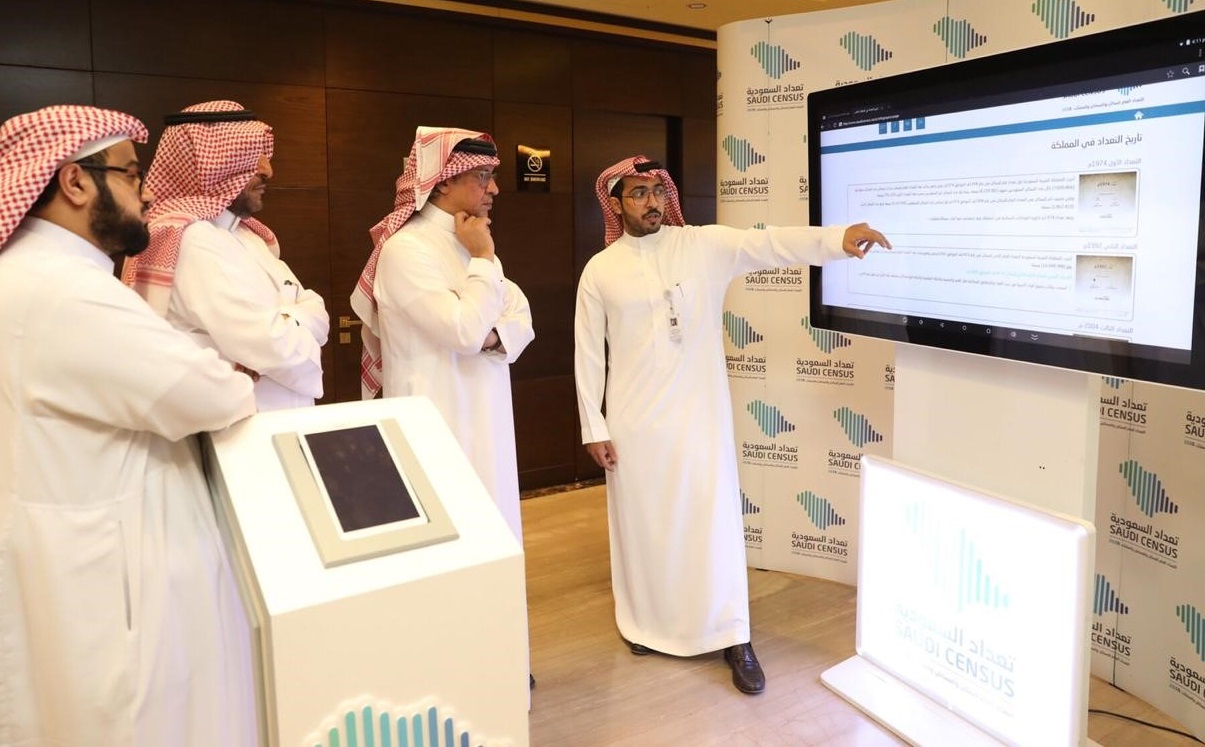
الهيئة العامة للإحصاء تطلق بوابة تعداد السعودية 2020م و "نظام العد الذاتي "
GASTAT Launches “Self-enumeration System” and e-portal for Saudi Arabia’s 2020 Census
Minister of Economy and Planning and Chairman of the Board of Directors of the General Authority for Statistics (GASTAT) Muhammad Bin Mazyad Al-Tuwaijri launched on Mondy 14/10/1440H (June 17th ,2019) the e-portal for Saudi Arabia’s 2020 census, as an awareness platform for everything related to the fifth census of housing, populations, and establishments 1440H-2020 through its official websites www.stats.gov.sa
A detailed presentation for the e-portal including its objectives as well as the preparations of the census was reviewed by HE. In fact, the e-portal of Saudi census 2020 is an official platform for all census’s news and everything related to it including announcing and publishing results, it is also a platform for spreading statistical awareness in general, deputy of GASTAT for strategic communication and clients support Taiseer AL-Mofarrej said.
The e-portal has special windows for the past four censuses and their results, it also includes windows for news and awareness content that shed light on the preparations made until now for Saudi Arabia’s 5th census, AL-Mofarrej clarified. He also added that citizens and expatriates will be able to complete the census form online through (self-enumeration system) via the website on March 2020, which is considered one of the most important modern methods for population census, as it will enable heads of the households to register all data of the family without the need for the visit of the statistical researcher to their places. This system will be used as one of the tools to collect statistical data from households in Saudi Arabia’s census 2020. On the other hand, spreading the statistical awareness among the society will lead to success of the self-enumeration experience since knowledge of technology is now considered as a feature of the Saudi society in all age groups, he added.
It is worth mentioning that the Council of Ministers has approved the implementation of the General Population and Housing Census for 2020 as the fifth census of Saudi Arabia. Tuesday’s evening, 22 Rajab 1441 (17 March 2020) will be the beginning of the actual enumeration for the 5th census of population and housing in Saudi Arabia. This date shall be the approved date for the time reference of all census works, data and information.
2020 census will provide a huge database that will be used as a reliable reference to conduct studies and researches required by the development plans and programs in Saudi Arabia, in addition to statistical data and indicators for measuring the change in the characteristics of population that occurred by time, also to make international, regional, and local comparisons, as well as reviewing and evaluating future estimates of population.
Saudi Arabia has implemented the first official census in its comprehensive sense in 1394 AH (1974). The second census was in 1413H (1992). The third census was conducted in 1425H (2004). 1431H (2010) census was the fourth census and was carried out by the Department of Statistics and Information before being transformed into the General Authority for Statistics.
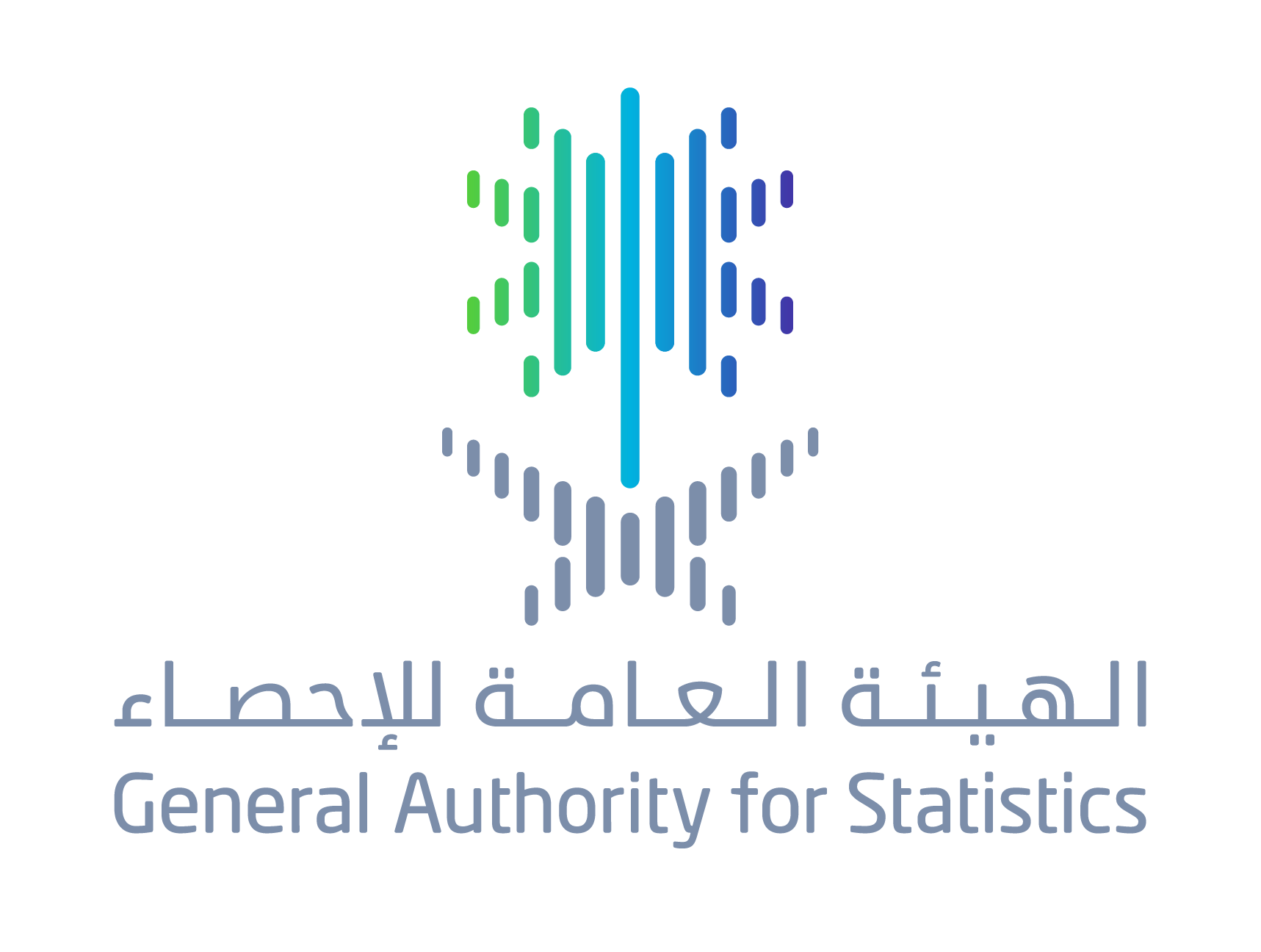
المملكة تختتم مشاركتها في الاجتماع الأول لأصدقاء مجموعة الرئيس المعني بالإحصاءات الاقتصادية في الأمم المتحدة ضمن ( 11 ) دولة
GASTAT provides development opportunities through big data
Saudi Arabia concludes its participation in the first meeting of the friends of the chair group on economic statistics of the United Nations within 11 countries
On Thursday May 30, 2019, Saudi Arabia, represented by the General Authority for Statistics (GASTAT), concluded its participation in the first meeting of the friends of the chair group on economic statistics of the United Nations within 11 countries, which was held at UN headquarter in New York city. The three-day meeting discussed the institutional transformation issues of national statistical bodies, in addition to the new methods, services and roles played by such statistical agencies.
GASTAT president, Dr. Fahad bin Sulaiman Altekhaifi, who led the Saudi delegation, confirmed that GASTAT 's participations with international organizations and experts of the international statistical agencies in their meetings are useful opportunities to highlight KSA's efforts in development with statistical figures and to develop statistical work according to international standards. Altekhaifi said statistical offices are challenged by changes in data gathering brought about by new technology. He added that big data could replace traditional statistical activities as an innovative way of producing official statistics or providing additional information to support the currently available official statistics, hence new indicators might be produced to support all decision makers in different developmental fields. The shift towards big data to be one of GASTAT official statistics sources reflects Saudi Arabia tendencies to benefit from the digital transformation in producing economic, social, and cultural statistics that support government bodies in accepting the rapid developmental changes which must be applied and reflected through official statistics.
GASTAT president indicated that using big data as a new (complementary or alternative) source of data creates some challenges that should be overcome by statistical entities. These challenges include the methodological aspects of data, determining data access methods, unifying statistical concepts, completing and processing data and other practices, in addition to ensuring a certain level of quality and enabling international comparisons. However, the organizational factors include other fields such as updating the organizational structure, working on statistical capacity development, establishing collaborations with the private and public data sources, and communicating with users.
Altekhaifi mentioned that the national statistical agencies must overcome these challenges to guarantee the usefulness of big data in the production of official statistics, especially for databases, computing and digitization. Statistical entities need to adopt national statistical strategies that deal with plans, strategies, implementation methods and development mechanisms in the national statistical environment. In addition, they need to enhance coordination and partnerships between the national statistical agencies and the different sources of data, whether governmental or private. However, all databases of government and private statistical entities must be electronically linked, while maintaining the confidentiality and privacy of data when exchanging data. Furthermore, statistical indicators definitions, concepts, and methodologies must be unified among all partners to avoid misunderstandings of statistics that result from the use of different concepts and methodology. This includes the use of official international statistical classifications such as ISIC 4 by all partners from the public and private sectors to facilitate work on databases and get coordinated and comparable data that are ready for all statistical purposes. Moreover, it is important for all statistical entities to have a road map through which they can use big data to provide official data.
GASTAT has reviewed all Saudi Arabia’ efforts to benefit from big data by approving the National Strategy for Statistical Development, electronic linkage projects, and international classifications. In addition to unifying the definitions and methodologies, and encouraging the initiatives of digital transformation in all public and private sectors.
It is worth mentioning that many international experts in the statistical and economic fields have participated in the discussions of the first meeting of the friends of the chair group on economic statistics of the United Nations. Topics discussed included the future of economic statistics within the Sustainable Development Goals from the perspectives of the international organizations and the national statistical entities. They also included digital infrastructure, and maintaining an interactive economic system, in addition to discussing a number of experiments on the institutional transformation of the national statistical offices, and methods of using data sources.
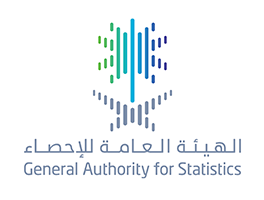
الهيئة العامة للإحصاء تُصدِر نتائج نشرة إحصاءات العمرة لعام (2018م)
GASTAT Releases Results of Umrah Statistics Bulletin (2018)
On Tuesday 2nd of Ramadan, 1440H corresponding May 7, 2019, General Authority for Statistics (GASTAT) released the results of Umrah Statistics Bulletin (2018). The report contains a number of Umrah-related indicators and results which have been taken from Umrah Survey (domestic Umrah performers), and the registered- based data of the Ministry of Hajj and Umrah (foreign Umrah performers).
The total number of Umrah performers reached (18,311,111) performers, (6,765,614) of whom are from outside Saudi Arabia as showed in the registered- based data of the Ministry of Hajj and Umrah. On the other hand, the total number of domestic Umrah performers (Saudis and non-Saudis) hit (11,545,497) performers. The percentage of Umrah performers for Saudis as well as non-Saudis coming from inside Saudi Arabia recorded (46.17%) and (53.83%), respectively, according to the Umrah Statistics Bulletin’s results.
Vast majority of domestic Umrah performers (Saudis and residents) carry out Umrah within one day, with a percentage of (67.5%) out of the total number of Umrah times they performed during 2018. However, they prefer to perform Umrah during Ramadan, where their percentage accounted for (59%), the Umrah Survey’s results showed.
King Abdulaziz International Airport in Jeddah registered the highest percentage regarding foreign Umrah performers with (62%), while the percentage of Umrah performers coming through Prince Mohammad bin Abdulaziz International Airport in Medina was (29.31%).
It is worth mentioning that all the Umrah Survey’s data are available on GASTAT’s website www.stats.gov.sa, to serve researchers and those who are interested in such data, and to provide decision makers with detailed field results.
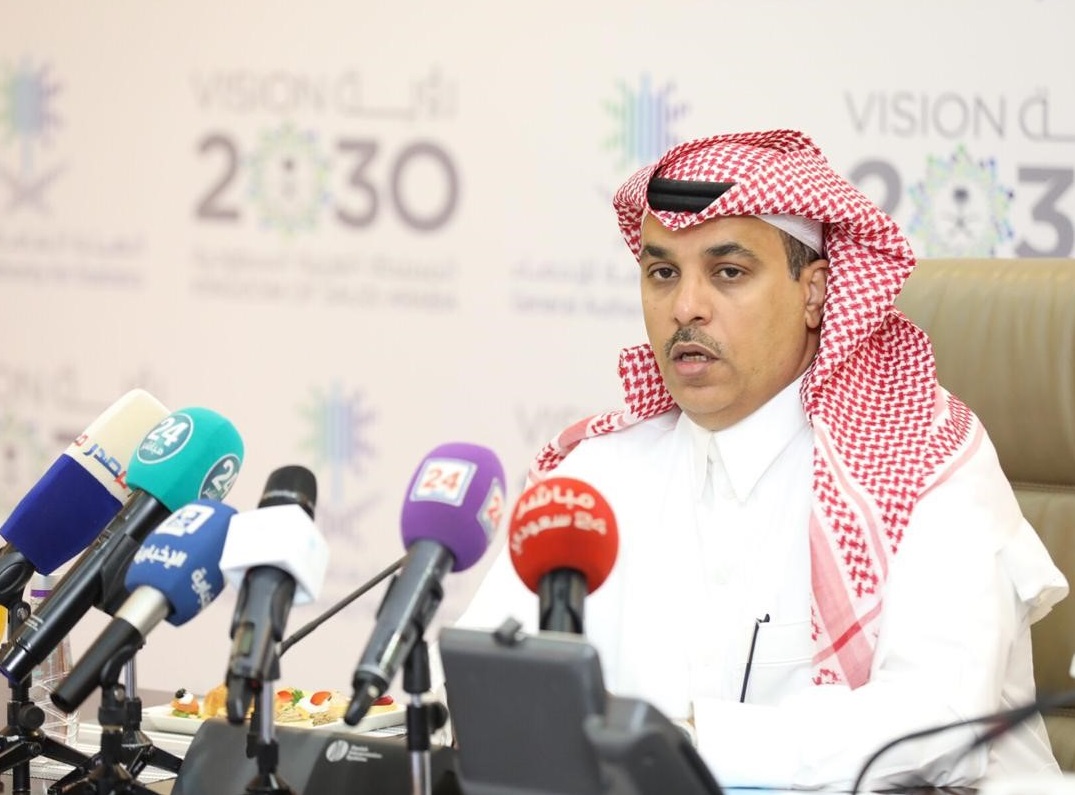
الهيئة العامة للإحصاء تُصدِر نتائج مسح دخل وإنفاق الأسرة 2018م
Issued every five years and considered the second most important statistical product, and its results contribute to the calculation of several social and economic indicators
GASTAT Releases the Results of the Household’s Income and Expenditure Survey (2018)
On Wednesday Sha’aban 26th, 1440 H (May 1st, 2019), the General Authority for Statistics (GASTAT) announced the results of the Household’s Income and Expenditure Survey (2018) in a press conference held in GASTAT’s headquarters in Riyadh city. At the beginning of the conference, HE the President of GASTAT, Dr Fahad Bin Sulaiman Altekhaifi, valued the main role of the households selected in the survey sample in reaching statistical results of high importance in a number of developmental directions. The Household’s Income and Expenditure Survey is one of the most important statistical household products of statistical agencies in all countries. The results of this survey provide the necessary statistical data for the development of economic and social development programs and plans aimed at achieving the well-being and progress of the communities. The data of this survey are the basis of many studies and research conducted by government agencies and international organizations. The statistical agencies classify it as one of the field surveys (households sampling) in social statistics, and provide data on patterns of expenditure in society and show the impact of demographic, social and economic factors on families.
According to international recommendations, the Household’s Income and Expenditure Survey is carried out every 5 years. It has been implemented in Saudi Arabia in 1970, 1977, 1980, 1985, 1999, 2007, and 2013). The collection of data takes (five quarters of two calendar years). The current survey was carried out within 13 months starting from February 28th, 2017 until March 31st, 2018.
HE explained that the length of data collection is due to the fact that many of the variables of the study are vulnerable to different seasons during the months or seasons of the year. There are goods and services people spend on during certain months of the year more than others. The household interview in the survey does not end with one field visit, but needs a number of visits to follow-up with the household during the period specified, to collect all the required data.
Altekhaifi added that all these factors necessitate the follow-up of field implementation for more than a year, including all seasons to measure the change in expenditure patterns and levels due to seasonal, occasional and periodic changes, which can be measured accurately in a relatively long period of time compared to the rest of the household surveys conducted by GASTAT throughout the year.
The president of GASTAT confirmed that the Authority has fulfilled its obligations in implementing the international standards adopted for indicators of household income and expenditure in order to enable international organizations to conduct a periodic comparison between all countries. The results of the survey, which were announced today, are the basis for a number of socio-economic statistical products. The results of the survey provide the data of qualitative weights used in the preparation of the consumer price index. Through this survey, the basket of goods and services is updated, which is a relatively fixed collection of consumer goods and services which are estimated on an annual basis. This basket is used to track inflation in each country. The goods of the basket are periodically adjusted based on the results of the Household’s Income and Expenditure Survey to take into account changes in consumer habits. The basket of goods and services is used as a basis to calculate the Consumer Price Index and wholesale prices.
The results of this survey also provide data on the patterns of expenditure in society, the impact of demographic, social and economic factors on the household, provide data on household expenditure on goods and services as a component of the final expenditure in GDP, and provide data necessary for national accounts related to the final consumption and household sector income.
He added that the results of the survey contribute mainly in identifying patterns of expenditure in society and indicating the impact of demographic, social and economic factors on them. It also provides policy and decision makers with all statistics on Saudi and non-Saudi household expenditure on consumer goods such as food, drinks, clothes, as well as non-consumer goods, such as remittances and capital goods such as purchasing of buildings, lands, stocks, donations, etc. Through these statistics, weights are provided showing the importance of consumer expenditure items, and it can be used to identify levels of income distribution and expenditure levels, by category (low, medium, high).
On the other hand, GASTAT confirmed that the results of this survey play a major role in supporting projects related to income and expenditure of households such as social protection, social development and family affairs projects. It also contributes to the development of important social indicators such as indicators of sustainable development goals, human development indicators and other international indicators.
The results of the Household’s Income and Expenditure Survey (2018) showed that the average monthly income of the household reached 11,984 SAR (eleven thousand nine hundred and eighty-four riyals), while the average monthly income of the Saudi household reached 14,823 SAR (fourteen thousand eight hundred and twenty-three riyals).
The results of the survey also showed that the average monthly income of "individuals with income" reached 6,346 SAR (six thousand three hundred and forty-six riyals), while the average monthly income of "Saudi individuals with income" reached 7,940 SAR (seven thousand nine hundred and forty riyals).
In terms of expenditure, the average monthly expenditure of households in Saudi Arabia reached 12,818 SAR (twelve thousand eight hundred and eighteen riyals), while the average monthly expenditure of the Saudi household reached 16,125 SAR (sixteen thousand and one hundred and twenty-five riyals). The average monthly “consumption” expenditure reached 11,728 SAR (eleven thousand seven hundred and twenty-eight riyals) , While the monthly “consumption” expenditure of the Saudi household reached 14,584 SAR (fourteen thousand five hundred and eighty-four riyals).
During the press conference, GASTAT clarified that the Authority made a number of measures to ensure the quality of the data. GASTAT used the method of the direct visit to the household, used tablets to complete survey questionnaire data based on the specific time frame, and applied (data auditing rules) to ensure consistency, accuracy and logicality of the data on the survey form (electronic rules that detect the discrepancy of answers). They have been built by linking the logical relationship between the answers to the questionnaire and its variables so that the field researcher and the observer can detect any error directly through the form during the collection of data from the head of the household. These programmed rules do not allow errors to be passed if the answer is inconsistent with information, or with another answer in the form. The data was verified by reviewing the collected data. All the work areas were subjected to a process of monitoring and reviewing from the data quality room at the headquarters of GASTAT. A sample of households were contacted by telephone and asked some questions in the questionnaire to verify the integrity of the researcher data, obtain lost data that have not been received yet if any, and validated the location where the questionnaire have been completed by matching the coordinates with the coordinates recorded in the sample file.
On the other hand, GASTAT published the results of the Household’s Income and Expenditure Survey (2018) on its official website www.stats.gov.sa. The result’s data has been provided in the form of open templates to be utilized in studies and analysis. It is worth mentioning that GASTAT intends to carry out the survey every three years from 2021 in accordance with the local, regional and international requirements of the data.
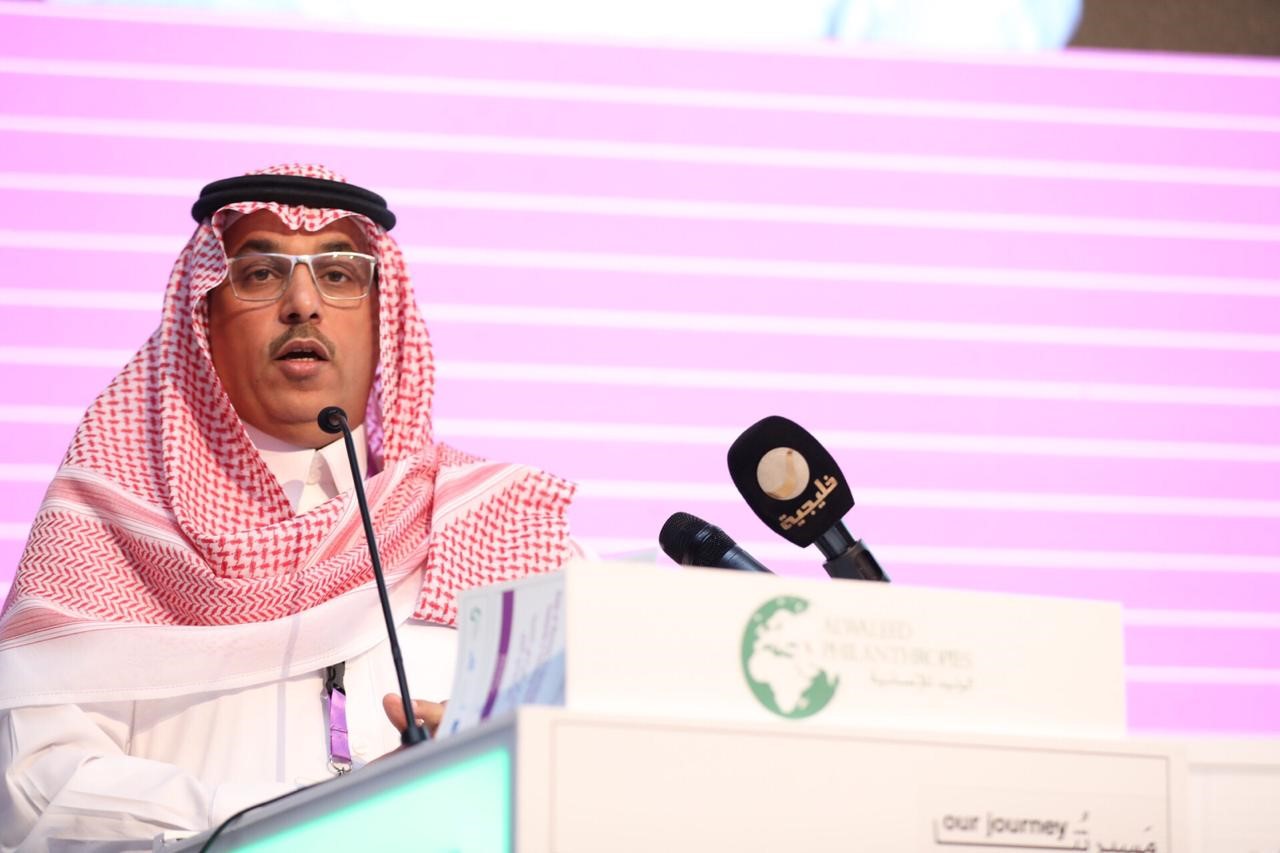
مؤتمر "دور المرأة السعودية في التنمية" يُعلن عن مؤشر تنمية المرأة بخمسة محاور و ( 56 ) متغير لدعم أصحاب القرار
With a collaboration between the National Observatory for Women, General Authority for Statistics, and Alwaleed Philanthropies
“The Role of Saudi Woman in Development” conference announces the indicator of woman development with five axes and (56) variables to support decision makers
On Saturday 22nd of Shaaban, 1440 H corresponding 27th of April, 2019, Minister of Labour and Social Development, Engineer Ahmed bin Sulaiman Alrajhi opened The conference of the Role of Saudi Woman in Development (Towards a Dynamic Society) in Riyadh. The conference was organized by the National Observatory for Women in King Saud University, General Authority for Statistics, and Alwaleed Philanthropies, with the participation of UN Woman. The National Observatory for Women’ indicators were launched in this conference. These indicators are considered tools that support the periodical measurement of Saudi woman participation in development. They are also considered one of the tools for developing strategies related to woman in Saudi Arabia to ensure the role of Saudi woman in development towards a dynamic society. These indicators complement all the National Observatory for Women’ previous indicators. However, the indicator that was launched today contains (56) variables distributed on five main axes; educational axis that supports the future of generations, health axis which concerns society protection, organizational axis which supports progress, economic axis for financial, industrial, and economic leadership in Saudi Arabia, in addition to the finally added one which is the social axis that contains the indicator of woman participation in development.
At the opening of the conference, Minister of Labour and Social Development asserted that (Saudi Vision 2030) has determined the road map and specified all national goals that empower woman, so that she becomes a real and active partner in developing our country. The vision also has developed executive programs and initiatives which will transfer all our hopes into real achievements. He added, we believe in women empowerment in our country with total conviction that is derived from the Islamic principles which give woman all her rights while offering her psychological and social protection. Since the foundation of our country, and its recent take off, the government has paid attention to woman basic rights and needs. To achieve this tendency, women empowerment programs have been designed especially in labour and education. Saudi woman nowadays registers high scores in both work and education. Moreover, she participates in many outstanding scientific research both locally and internationally. She also succeeds in the business sector, in addition to the management of corporations, banks and non-profit associations.
For his part, GATAT president, Dr. Fahad bin Sulaiman Altekhaifi indicated that the United Nations approved The Eight Millennium Development Goals (MDGs) until 2015. Many countries prepared reports to measure what goals have been achieved based on the issued official statistical indicators (either issued by official statistical entities, statistics of government entities, or statistics of international organizations). This experiment has undergone assessment and development. Committees and work teams have already started working on new SDGs until 2030 with (17 goals), and Saudi Arabia was one of the first countries who addressed SDGs. The SDGs governance was set by the Ministry of Economy and Planning (MEP) as the responsible entity for SDGs file, the General Authority for Statistics (GASTAT) as the responsible entity for building statistical indicators, in addition to other government ministries, authorities, and institutions which contribute in the planning and implementation of these goals in accordance with their nature of work. SDGs were also considered within the national strategies (Statistical indicators within the National Strategy of Statistical Development, and other strategies related to household, women, and childhood). As a result, Saudi Arabia submitted the voluntary report– within certain countries- last year in the United Nations. Dr. Fahad Altekhaifi stated that the model of the National Observatory for Women, and the tripartite partnership between the National Observatory for Women ,General Authority for Statistics, and Alwaleed Philanthropies for the survey study which included 15 thousand households from different Saudi regions- in addition to the works of this conference- represent an ideal model of the developmental Saudi administrative work Which affirms that the collaboration between different entities paves the way to overcome any challenges and achieve desired goals.
Mohammad Naciri, UN Women Regional Director for the Arab States and Asia-Pacific said that there are false impressions about women in GCC region and in Saudi Arabia particularly. The international media significantly contributed in spreading these impressions based on superficial analyses. He commended the efforts of the Government of the Kingdom of Saudi Arabia on the Women in Development Study. Furthermore, he confirmed that the results of the indicator adopted by (the National Observatory for Women, General Authority for Statistics, and Alwaleed Philanthropies) reflect the lived realities of Saudi women, and show improvement and progress in the fields of health and education.
On the other hand, HRH Princess Lamia bint Majed AL-Saud the Secretary General at Alwaleed Philanthropies pointed out that woman’s development indicator, which is the first of its kind came to express appreciation to the Saudi women’s efforts for their contributions in various fields and sectors. All data included in the indicator will help in launching distinctive initiatives and programs that will identify the social and economic obstacles facing women in Saudi Arabia as well as enhancing the cooperation with local and international partners to increase efficiency in dealing with these obstacles and overcome them with the possibility to measure the improvement and the impact of such initiatives, she added.
The results were based on three factors: first, gathering strong evidence about our current situation and next destination, which will guide us to reach to the target groups in the right place and time. Second, transparency, since we are very keen to share true stories about women in Saudi Arabia and discuss them in clearly to achieve the desired progress as we cannot take effective steps without understanding the full picture of it. Third, partnership that has emerged as a result of the importance of cooperation between the right institutions to reach to the desired results and change; as a matter of fact, this cannot be achieved without an effective collaboration between the relevant parties, HRH clarified.
The vice rector for Planning and Development at King Saud University Dr.Yousif Abdu Asiri mentioned that the National Observatory for Women’s participation in development (NOW) is a great platform that attracted experts of women’s affairs, monitor women’s participation and provide decision makers and relevant entities with results, indicators, statistics, and database to be as a supportive reference for the social research, developmental projects, and for everything related to family and community from regulations, institutions to initiatives. The observatory is consistent with 2030 vision in which it supports human researches and enables the developmental role of them, it became a clear symbol of the institutional research at King Saud University and has achieved a lot in a short period of time besides its effective efforts and positive role. During the opening of the conference, King Saud University has announced the launching of the new website of NOW which provides an interactive platform for researchers to modify the equations to calculate specific relations between the five dimensions of the indicator of woman’s participation in development, or to identify different categories, for example, calculating woman’s participation in development by age group or by educational level or by administrative region.
Additionally, results released in the conference of (Woman’s role in development “towards vital community”) included data provided by the General Authority for Statistics GASTAT which were obtained from field surveys. These data were analyzed by NOW by using a certain methodology and research tools. The results focus on key measurements of international studies related to men and women: health, education, economic opportunities, organizational structure, and social context. The study evaluates a number of variables between 8 to 20 variables in each one of these five dimensions.
The conference held two main sessions and three local sessions with a participation of a number of experts and officials. The first session includes (the main legislations of woman’s participation in development) which discusses: legislations that guarantee woman’s participation in the public judiciary, legislative frameworks of personal affairs, legislative frameworks of woman protection, the role of law in promoting women’s rights, and women’s rights in health care. On the other hand, the second session includes: (social capital and its role in promoting woman’s participation in development) which discusses: social capital “the modern approach to development”, sustainable development between community trust and interrelationships, and the social dimension of “the indicator of woman’s participation in development”. In addition, the local round table session has discussed in its first session the strategies and future aspirations of Saudi women, the second session was about woman’s participation in development from a global perspective, while the third session has showed some examples of woman’s participation in development.
GASTAT Releases Real Estate Price Index for Q1, 2019
GASTAT Releases Real Estate Price Index for Q1, 2019
General Authority for Statistics (GASTAT) has released the report of Real Estate Price Index for Q1, 2019. The report has been published on the official website of GASTAT www.stats.gov.sa.
The real-estate price index has edged down to 4.0%, compared to the previous quarter (Q4, 2018), where its indicator has reached (80.1) in Q1, 2019, compared to (80.4) in Q4, 2018. This decline can be attributed to the decrease in the main sectors composing the indicator: the housing sector (5.0%), the commercial sector (4.0%), and the agricultural sector (2.0%), compared to Q4 in 2018.
Regarding residential sector, the residential lands have witnessed a decrease in Q1, 2019 reaching (0.5%), compared to the previous quarter (Q4, 2018), and residential buildings have dropped to (0.6%). However, the following categories have increased recording in villas (0.1%), apartments (0.2%), and houses (0.2%). On the other hand, the commercial sector has showed a decline compared to the previous quarter for both commercial land plots and (exhibitions/ shops), recording (0.4%) and (0.3%), respectively, while commercial centers have risen by (0.3%). At the level of agricultural sector, agricultural lands have fallen to (0.2%).
It is worth noting that the index is based on registered-based data of real-estate transactions available at the Ministry of Justice. It is an essential tool that supports entities making economic and statistical decisions regarding the movements of real - estate prices and future forecasts during different periods of time. Moreover, the index has three main sectors consisting of several types of real estate classes: housing sector which includes (plot of land, building, villa, apartment, and house), commercial sector including (plot of land, building, exhibition/commercial center and shop), and agricultural sector with one category which is the agricultural land.
The real estate price index aims at finding accurate real estate statistical indicators that will help in measuring Saudi Arabia’s real estate market in line with global norms and standards.
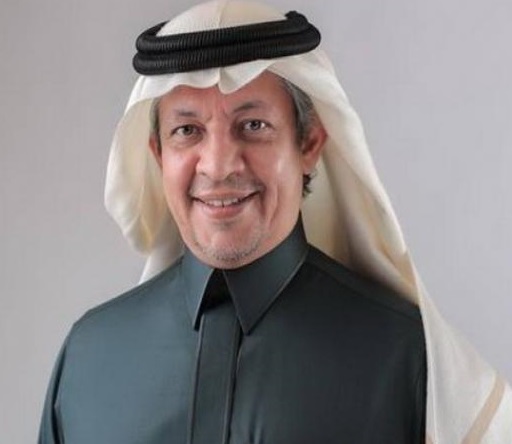
رئيس مجلس إدارة الهيئة العامة للإحصاء يشكر خادم الحرمين الشريفين وسمو ولي عهده على الموافقة الكريمة لتنفيذ الاستراتيجية الوطنية للتنمية الإحصائية
The implementation will subject to monitoring and evaluation system that guarantees achievement at the level of all engaged entities, HE assured
GASTAT Board of Directors’ Chairman Thanks the Custodian of the Two Holy Mosques and HRH the Crown Prince for the Kind Approval on the National Strategy for Statistical Development
The chairman of board of directors of GASTAT, the Minister of Economy and Planning Ministry Mr. Mohmmad AL-Tuwaijri appreciated the kind approval of the Council of Ministers on the national strategy for the statistical development in the meeting that was held on Monday 18th of Sha’ban 1440.
HE thanked the Custodian of the Two Holy Mosques King Salman bin Abdulaziz and HRH the Crown Prince for the kind approval on the strategy. It is the first national strategy for the statistics sector in Saudi Arabia. In fact, the strategy was set to enhance and boost the information and statistical work in Saudi Arabia to reach to an effective response that can meet the increasing demand of statistical data and information. Moreover, the strategy will serve the development path of Saudi Arabia to fulfill its international, regional and national duties. It was based on an ambitious future vision up to 2030 with medium and long-term objectives to be achieved. The strategy has adopted five axes: First, the use of statistical information and data (demand axis), that aims at ensuring the improvement in the use of statistical information and data in Saudi Arabia, and meeting all users’ needs by providing easy-to-use statistical information and data in a timely manner. Second, statistical information and data production (supply axis), which seeks to develop administrative records to be gradually relied upon as a primary source of data, improve field operations, such as censuses, surveys and research, and apply the latest standards, methods and classification policies when collecting, analyzing and disseminating data. Third, the axis of modern technologies, that aims at using the latest technologies in all statistical work stages, and ensuring a high-quality infrastructure system. Fourth, the axis of communication and awareness, which aims at strengthening the society’s statistical knowledge through promoting education and raising awareness, and establishing a culture of communication among key actors within the Statistics & Information Sector. Fifth, the axis of governance through which GASTAT seeks to consolidate the principles that govern the Statistics & Information Sector’s activities, establish a culture of results-based management, ensure the sustainable development of human resources, and attract highly-qualified individuals.
Implementation of this strategy will be subjected to monitoring and evaluation system that guarantees accurate implementation at the level of all engaged entities, HE affirmed. On the other hand, an annual report will be prepared and published on this matter, and two evaluations will be conducted for each five years. The strategy will be updated on a regular basis based on these elements and based on relevant updates as well; occurring inside and outside Saudi Arabia. GASTAT will work hand in hand with all engaged entities as well as all the components of the statistical sector in accordance with the approved strategies to achieve and meet the objectives of Saudi Arabia’s 2030 Vision and the initiatives of the National Transformation Program 2020, he added.
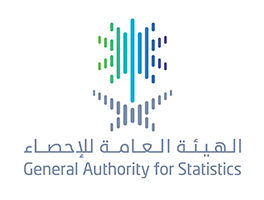
الهيئة العامة للإحصاء: تُصدر نتائج مسح التجارة الداخلية للربع الثالث من عام 2018م
GASTAT: Releases Internal Trade Survey’s Results Q3- 2018
The General Authority for Statistics (GASTAT) released on its official website www.stats.gov.sa the results of the "Internal Trade Survey for the Third Quarter of 2018". The survey is about a set of economic statistics and data for short-term use to measure the performance of the trade sector in order to assess its growth, and identify its strengths or weaknesses. Moreover, it is an important economic activity that contributes to increase employment and GDP, exactly like the retail activity which connects producers with consumers, and focusses on the features and components of establishments engaged in the activities of vehicles sale and repair as well as wholesale and retail sale trade.
The survey showed that the number of Saudi females’ workers of internal trade establishments increased by 4%, compared to the previous quarter. The workers’ number of internal trade sector in Saudi Arabia reached about one million six hundred ninety-three thousand workers by the end of the third quarter of 2018, including almost one million two hundred fifty-five thousands of non-Saudi workers. However, the number of Saudi workers of the same sector was approximately four hundred thirty-eight thousand workers.
Rate of worker’s productivity in internal trade activity increased by 1.12% compared to last year 2018, results showed. They also indicated that the total operating revenues(sales) of internal trade sector reached (151,389 million) one hundred and fifty billion, three hundred eighty-nine million riyals during the second quarter of 2018.
The total operating expenses of the sector during the same period reached (90,224 million) ninety billion, two hundred twenty-four million riyals. Therefore, the operating surplus of the three sectors activities during the third quarter of 2018 was about (49,424 million) forty-nine thousand, four hundred twenty-four million riyals.
Based on the results of the survey, the operating surplus of the wholesale trade was the highest among all the activities of the internal trade and was about (19,153 million) nineteen thousand, one hundred fifty-three million riyals during the third quarter of 2018. On the other hand, the operating surplus of the retail trade activity reached around (16,008 million) one thousand, six hundred eight million riyals. Finally, the operating surplus of the sale and repair of motor vehicles and motorcycles activity accounted to almost (14,262 million) fourteen thousand, two hundred sixty-two million riyals.
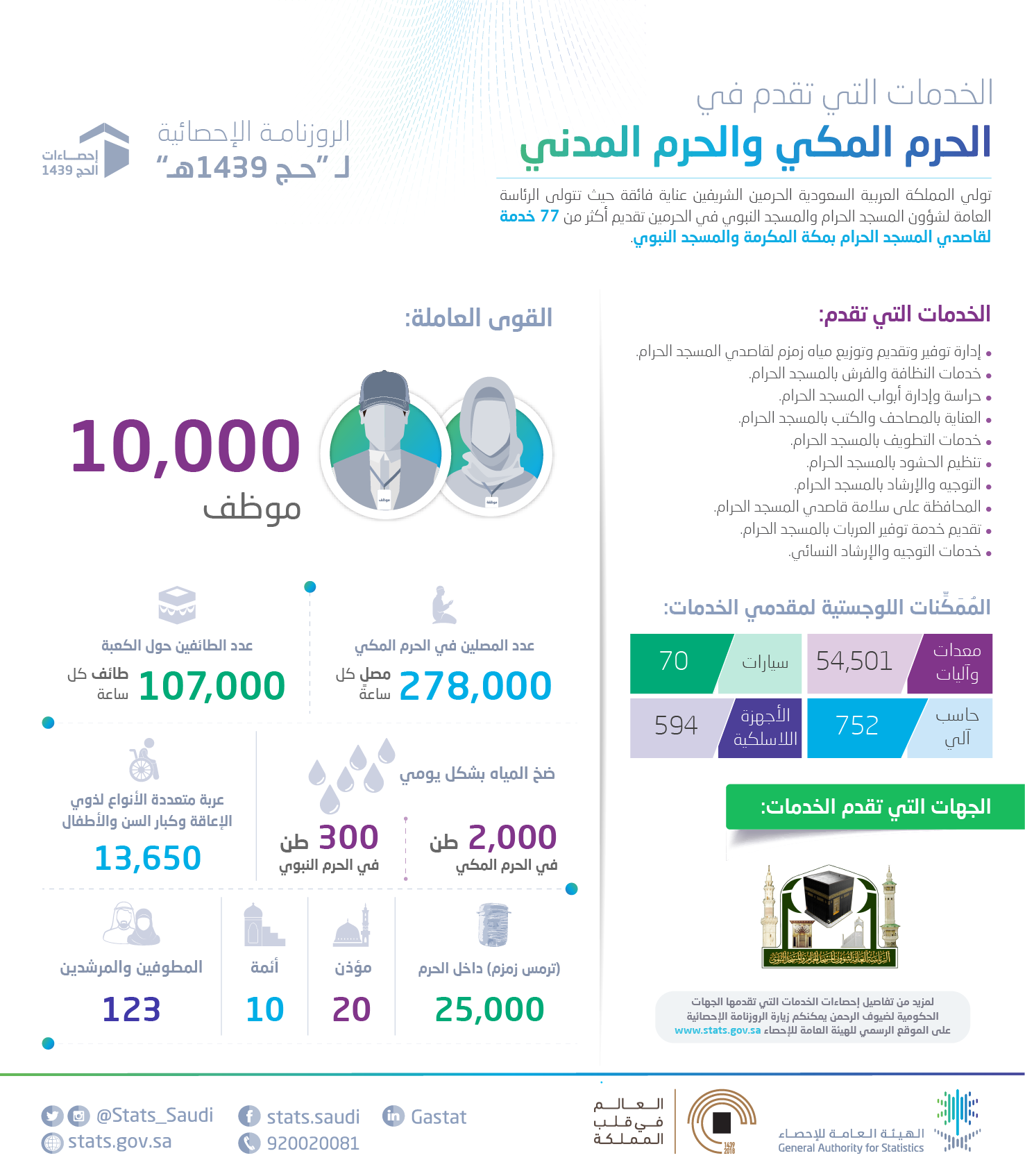
" الإحصاء": أكثر من 278 ألفَ مصلٍّ، و107 ألف طائف حول الكعبة كل ساعة، و42 دراسةً وبحثًا علميًّا لدعم التطوير
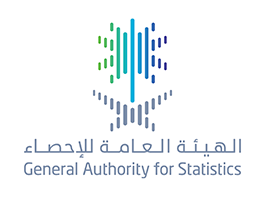
الهيئة العامة للإحصاء: انخفاض معدل البطالة للسعوديين خلال الربع الرابع 2018م مقارنة بالربع السابق
GASTAT releases the Labour Market Bulletin, Quarter (4) 2018
GASTAT: Saudis’ Unemployment Rate Decreases During the fourth Quarter of 2018 Compared to the Previous Quarter
On Sunday Rajab 24th, 1440H. (corresponding to March 31st, 2018) GASTAT released the Labour Market Bulletin for the fourth quarter of 2018 on its official website (www.stats.gov.sa). The bulletin is based on the estimates of the Labour Force Survey that is conducted by GASTAT on a quarterly basis as well as the labour market data from the administrative records available at the related entities (Ministry of Labour and Social Development, Ministry of Civil Affairs, General Organization for Social Insurance, Human Resources Development Fund, and National Information Center).
The results of the 2018 fourth quarter bulletin, based on the estimates of the Labour Force Survey, showed a decrease in the total unemployment rate of Saudis (15 years and above) reaching (12.7%) compared to (12.8%) in the previous quarter. The Saudi males’ unemployment rate reached (6.6%), whereas the unemployment rate of Saudi females reached (32.5%) in the fourth quarter of 2018. The unemployment rate for the total population (15 years and above) stabilized at (6.0%) in the fourth quarter of 2018.
The results of the survey also showed that the economic participation rate of total Saudis (15 years and above) reached (42.0%) in the fourth quarter of 2018. The economic participation rate reached (20.2%) among Saudi females, and (63.0%) among Saudi males in the fourth quarter of 2018. Also, the bulletin indicated that the total employed Saudis (males and females) reached (3,111,199) based on the data of the administrative records.
According to the results of the bulletin and based on the data of the Ministry of Civil Service (Jadarah and Sa’ed) and the data from the Human Resources Development Fund (Taqat), the total number of Saudi job seekers reached (970.229) in the fourth quarter of 2018.
GASTAT has defined jobseekers as Saudi individuals (males and females) registered in job seeking programs of the Ministry of Civil Service (Jadarh and Sa’ed) as well as Human Resources Development Fund (Taqat) where they entered their personal data, qualifications, experiences, and CVs electronically. Jobseekers included in the administrative records are not subjected to the internationally recognized criteria and conditions of the International Labor Organization (ILO); hence, not all of them are considered unemployed individuals. Therefore, not every job seeker is an unemployed individual; they may be looking for a work while still working in another job, as in the case of job seekers in the government sector where they work for their own business and not registered as employees in the governmental administrative records (Civil Service, Social Insurance, commercial registers, and municipal licenses) .
